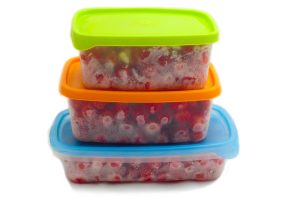As we relish the flavors of locally grown strawberries, their sweet aroma and vibrant hues evoke the essence of sunshine captured in each bite. In the wake of Valentine’s Day, where strawberries often take center stage, let’s dive into the art of preserving these delicate berries, exploring freezing techniques that can be enjoyed long after the season has passed.
Freezing Strawberries: A Symphony of Techniques
Freezing strawberries is a wonderful way to extend the season’s bounty and enjoy the taste of freshness throughout the year. To cater to various preferences, we will explore multiple freezing methods: without sugar, with sugar, and with syrup.
Freezing without Sugar:
For those who prefer the pure essence of strawberries without added sweetness, tray freezing is the key. This method allows for the berries to stay loose and can then be easily removed or poured from the container. Here’s a step-by-step guide:
- Wash, remove caps, and drain whole berries.
- Spread berries in a single layer on a baking sheet or jellyroll pan.
- Place the tray flat in the freezer until the berries are frozen solid (typically one to two hours).
- Transfer the frozen berries to plastic freezer bags, removing as much air as possible to maintain freshness.
- To savor the best taste, consume the berries in a slightly thawed state, with a few ice crystals remaining. The natural expansion of frozen water causes the berry to soften when completely thawed.
Freezing with Sugar:
For those who enjoy a hint of sweetness in their frozen strawberries, consider the following method:
- Wash, remove caps, and drain berries.
- To freeze whole, sliced, or crushed strawberries, add ¾ cup of sugar to 1 quart (approximately 1⅓ pounds) of strawberries.
- Stir until most of the sugar dissolves, allowing the mixture to stand for 15 minutes before transferring the berries into containers.
- Ensure adequate headspace during packaging to prevent overflow when the berries freeze.
- Artificial sweeteners can be used following the manufacturer’s directions, but it’s essential to note that they lack certain benefits of sugar, such as color protection and syrup thickness. Alternatively, add these sweeteners after the berries thaw.
Freezing with Syrup:
For those who are looking for pure sweetness. Strawberries packed in syrup are generally best for uncooked dessert use. The types of syrup range from very light to very heavy.
- Wash, remove caps, and drain whole berries.
- To freeze whole, sliced, or crushed strawberries, place berries into a desired freezer container.
- Cover berries with a cold 50 percent syrup. To make the syrup, dissolve 4 cups of sugar in 4 cups of lukewarm water. Chill the syrup before using. For additional syrup recipes for freezing fruits visit Syrups for Use in Freezing Fruits
- Ensure proper headspace during packaging to prevent overflow when the berries freeze.
- Seal and place in the freezer.
Tips for Successful Freezing:
- The speed of freezing impacts the quality of the berries; the faster they freeze, the ice crystals that develop will be smaller. Set the freezer temperature to 0°F or lower, ideally reaching minus 10°F or lower 24 hours before freezing.
- Store packages in contact with freezer surfaces, in the coldest part of the freezer, with enough space for air circulation until the berries are frozen. Once frozen, store packages close together.
- Never overload the freezer with unfrozen food. Work in small batches so the food can freeze within 24 hours. An overloaded freezer can slow the freezing rate and affect the quality of the frozen product.
- The recommended storage time for strawberries is 8 – 12 months in a freezer held at 0°F. The shorter the time, the better-quality product.
Preserving the exquisite flavors of locally grown strawberries is not just a culinary endeavor; it’s a celebration of seasonal abundance. Whether you prefer them unsweetened, with sugar, or in syrup, the steps outlined ensure optimal flavor and quality. Remember to freeze quickly, maintain freezer temperature, and avoid overloading the freezer for the best results. So, roll up your sleeves, embrace the sweet aroma, and enjoy those strawberries for months to come.
For more information on preserving strawberries and other fresh fruits visit National Center for Home Food Preservation.
Image Credit: Canva.com/Education
 0
0


